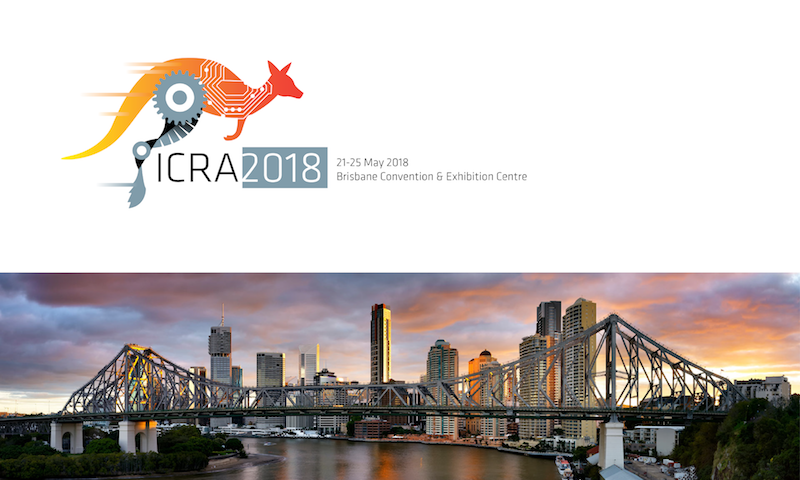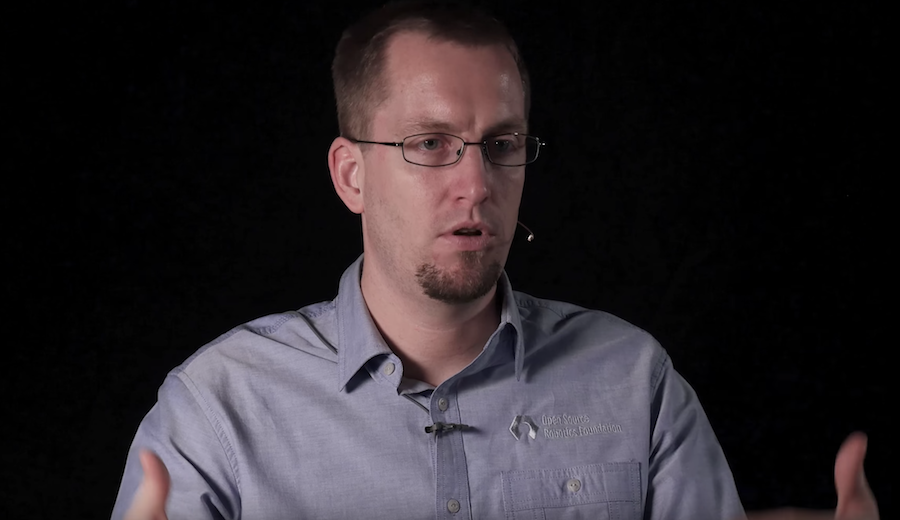7 Reasons Your Life Depends on an Accurate IMU (Inertial Measurement Unit) in a Self-Driving Car
Added Value From an Ejector With Integrated Controls in a Suction Cup Handling System
This Robot Has Soft Hands. It Could Be the Future of Sustainable Production
End of the line for ASIMO, Japan’s famed robot?
Are You Still Manually Programming Your Robot? Why Not Fully Automate!
How Can Robotic Automation Help Alleviate Labor Shortages?
The Top Ten Autonomous Delivery Solutions of 2018
Machine learning will redesign, not replace, work
Wave Gliders Collect Live Ocean Data from Hawaii’s Kilauea Volcano Lava Flow
#263: ICRA 2018 Exhibition, with Juxi Leitner, Nicholas Panitz, Ben Wilson and James Brett

In this episode, Audrow Nash interviews Juxi Leitner, a Postdoctoral Research Fellow at QUT; and Nicholas Panitz, Ben Wilson, and James Brett, from CSIRO.
Leitner speaks about the Amazon Picking challenge, a challenge to advance the state of robotic grasping, and their robot which won the challenge in 2017. Their robot is similar to a cartesian 3D printer in form and uses either a suction cup or a pinch gripper for grabbing objects. Their robot has a depth camera and uses a digital scale to determine if an object has been picked up successfully. Leitner discusses what their team did differently from other teams that helped them win the competition.
Panitz, Wilson, and Brett speak about their hexapod robots. Their hexapods are for several purposes, such as environmental monitoring and remote inspection. They choose to use hexapods because they are statically stable. They discuss the design of their hexapods and how research works at Commonwealth Scientific and Industrial Research Organization, or CSIRO.
A video of the robot Leitner discusses, #Cartman:
An example of CSIRO’s hexapod robots for inspection:
Links
#263: ICRA 2018 Exhibition, with Juxi Leitner, Nicholas Panitz, Ben Wilson and James Brett

In this episode, Audrow Nash interviews Juxi Leitner, a Postdoctoral Research Fellow at QUT; and Nicholas Panitz, Ben Wilson, and James Brett, from CSIRO.
Leitner speaks about the Amazon Picking challenge, a challenge to advance the state of robotic grasping, and their robot which won the challenge in 2017. Their robot is similar to a cartesian 3D printer in form and uses either a suction cup or a pinch gripper for grabbing objects. Their robot has a depth camera and uses a digital scale to determine if an object has been picked up successfully. Leitner discusses what their team did differently from other teams that helped them win the competition.
Panitz, Wilson, and Brett speak about their hexapod robots. Their hexapods are for several purposes, such as environmental monitoring and remote inspection. They choose to use hexapods because they are statically stable. They discuss the design of their hexapods and how research works at Commonwealth Scientific and Industrial Research Organization, or CSIRO.
Links
More Than 110 UAS Solutions Providers Have Signed On To Exhibit At Commercial UAV Expo
Robots in Depth with Dirk Thomas
 In this episode of Robots in Depth, Per Sjöborg speaks with Dirk Thomas about his work with ROS at the OSR Foundation.
In this episode of Robots in Depth, Per Sjöborg speaks with Dirk Thomas about his work with ROS at the OSR Foundation.
We hear about how programmers and roboticists can benefit from being part of and contributing to the open source community.
Dirk discusses the development of ROS and how it is being used both in academia and in commercial projects. He also shares his thoughts on the future development of ROS and how it can support advancements in robotics overall.
This interview was recorded in 2015.
Robots in Depth with Dirk Thomas
 In this episode of Robots in Depth, Per Sjöborg speaks with Dirk Thomas about his work with ROS at the OSR Foundation.
In this episode of Robots in Depth, Per Sjöborg speaks with Dirk Thomas about his work with ROS at the OSR Foundation.
We hear about how programmers and roboticists can benefit from being part of and contributing to the open source community.
Dirk discusses the development of ROS and how it is being used both in academia and in commercial projects. He also shares his thoughts on the future development of ROS and how it can support advancements in robotics overall.
This interview was recorded in 2015.